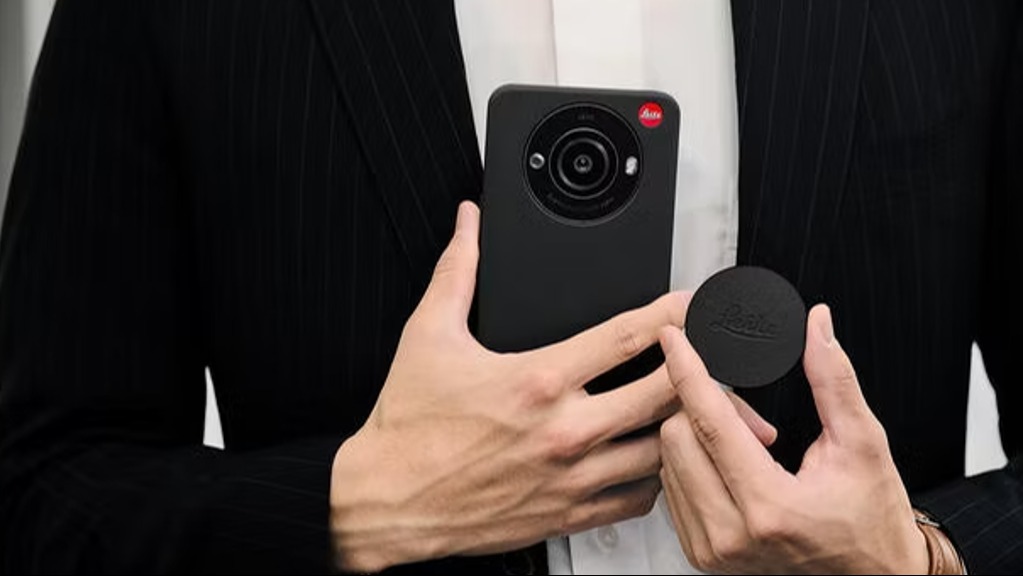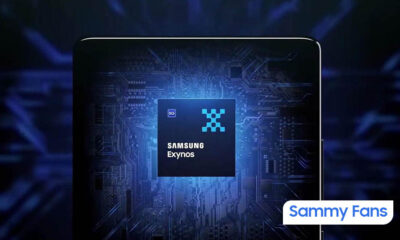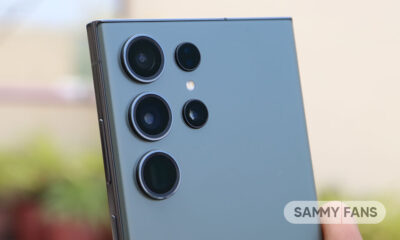Phones
Samsung Galaxy S23 renders leak shows off S22 Ultra-like camera design and more

Recently, we saw Samsung Galaxy S23+ renders designed by leakster OnLeaks. Now the same tipster is showing off the Samsung Galaxy S23 design in a complete 360-degree view to provide us with an accurate idea of what the company is going to bring next year.
OnLeaks in collaboration with Digit has published the base model’s 3D CAD renders. The renders show off some notable changes to the camera module. Well, there are still triple rear cameras placed vertically but the company has removed the camera island as it does on this year’s Galaxy S22 Ultra.
Join Sammy Fans on Telegram
Meanwhile, when considering the front side, the renders suggets that the device will equip a little broader bezels, however, with the same display size. The tipster says that it will sport a 6.1-inch screen diagonally. Other display details are currently under wraps, it’s likely to feature a 120Hz refresh rate.
Follow Sammy Fans on Google News

Moving ahead, earlier reports said that Galaxy S23 could only get a minor increase in dimensions over the Galaxy S22 but the newly leaked Samsung Galaxy S23 design tells that the upcoming phone will be slightly bigger in size. It will have around 146.3 x 70.8 x 7.6 mm in size.

Aside from these few changes, the Galaxy S23 will feature the exact same design as the Galaxy S22. In the meantime, it will bring back most of the specifications from its predecessor, it is said to only replace the processor with of new generation’s.
Check out the video –
Galaxy S23 Specs (rumored):
The Samsung Galaxy S23 is suggested to feature Snapdragon 8 Gen 2 chipset. At the same time, it could equip Exynos 2300 in European countries. The processor could pair with 8GB/12GB of RAM and 128GB/256GB of internal storage.
On the other side, the camera specifications are called to remain the same. It will sport a triple camera system consisting of a 50MP primary camera, a 12MP ultrawide camera, and a 10MP telephoto camera, whereas, the front side has a 12MP selfie shooter.
The battery of the device is rumored to get slightly bigger, however, it will support the same 25W fast charging, as per the 3C certification site.

Phones
Galaxy M35 5G surfaces on Samsung India site after FCC and Dekra’s OK

Samsung seems all set to introduce Galaxy M35 5G in India. The phone has surfaced on Samsung India support website and the FCC and Dekra certification database. The development indicates that the official launch is not far away, at least in India.
The unreleased Galaxy M35 5G made its first appearance on the Samsung India support website. The listing revealed nothing other than the phone’s model number – SM-M356B. As spotted by 91mobiles, the upcoming handset has also received certification from FCC and Dekra.
Listing on the FCC database revealed that the Galaxy M35 5G features NFC, LTE, and 5G. It’s also confirmed that the device supports 25W fast charging, lagging behind its elder brother – Galaxy M55 5G, which supports fast charging up to 45W.
Dekra certification disclosed that the phone packs a 5880mAh battery, which Samsung will market as 6000mAh. Other features could include Android 14 OS out-of-the-box, Exynos 1380 chipset paired with 6GB of RAM as well as a modern punch hole display.
Stay up-to-date on Samsung Galaxy, One UI & Tech Stuffs by following Sammy Fans on X/Twitter. You can also discover the latest news, polls, reviews, and new features for Samsung & Google Apps, Galaxy Phones, and the One UI/Android operating system.
Do you like this post? Kindly, let us know on X/Twitter: we love hearing your feedback! If you prefer using other social platforms besides X, follow/join us on Google News, Facebook, and Telegram.
Phones
Samsung’s new 5G modem fuels satellite connectivity in Google Pixel 9 series
Google‘s Pixel 9 series is ready to introduce a significant upgrade with emergency satellite connectivity and new Samsung modem. This series aims to solve the persistent connectivity problems seen in previous Pixel models.
According to the information via AndroidAuthority, Samsung Modem 5400 will be integrated with Tensor G4 chips for the Pixel 9 series to bring significant improvements in terms of speed, power efficiency, and stability
The Pixel 9’s modem will support 5G non-terrestrial networks (NTN), which means it will enable satellite-based communication. This is particularly important for emergencies where standard network coverage is unavailable.
Moreover, this innovative feature is not exclusive to the Pixel 9. The next-generation Pixel Fold and a 5G tablet, currently under development, will also be equipped with the same modem.
One of the most notable features of this upgrade is the ability to connect with emergency services via satellite, which is crucial for users in areas without cellular coverage. To facilitate this, Google has implemented a system that guides users through a set of questions, allowing for quick communication with emergency responders. For example,
- What happened?
- [Are you/Are they/Is everyone] breathing?
- In total, how many people are [missing/trapped]?
- What best describes your situation?
- What is on fire?
- Are there weapons involved?
Although the release details for the 5G tablet are still unclear, the Pixel 9 series is expected to lead the way in mobile communication technology, ensuring users can remain connected in any location.
Google Pixel 9 renders reveal design overhaul, telephoto camera
Stay up-to-date on Samsung Galaxy, One UI & Tech Stuffs by following Sammy Fans on X/Twitter. You can also discover the latest news, polls, reviews, and new features for Samsung & Google Apps, Galaxy Phones, and the One UI/Android operating system.
Do you like this post? Kindly, let us know on X/Twitter: we love hearing your feedback! If you prefer using other social platforms besides X, follow/join us on Google News, Facebook, and Telegram.
Phones
Samsung’s Variable Aperture Camera makes surprise return with Leica Leitz Phone 3

Samsung’s Galaxy S9 and S10 were equipped with variable aperture Camera tech, which could be revived with the next Leica phone. World-know camera manufacturer Leica also has a dedicated smartphone segment, which focuses on stunning camera specifications.
Latest inputs indicate that the upcoming Leitz Phone 3 by Leica will feature a variable aperture camera tech – the same as Samsung’s legendary Galaxy S9 and Galaxy S10. The company is reportedly working on the Leitz Phone 3 which will be launched in Japan only.
Camera Specs
Leica Leitz Phone 3 is said to have a 47.2MP primary 1-inch sensor with an aperture of f/1.9, a depth sensor with 1.9MP, plus a 12.6MP sensor for the front camera. The specs are the same as Phone 2, but the variable aperture feature sets the Leitz Phone 3 apart.
The company itself confirmed that the Leitz Phone 3 is equipped with variable aperture camera tech. This high-profile camera feature will allow users to adjust the opening to the sensor to improve photography in different lighting conditions.
Leica is also said to have optimized software with Noctilux-M 1:1.2/50 mm, Summilux-M 1:1.4/28 mm, and Summilux-M 1:1.4/35 mm sensors. As a result, the smartphone will allow users to choose between f/1.2, f/1.4, and f/8 aperture levels to better shoot in sunlight and low-light conditions.

Image: AndroidPolice
Stay up-to-date on Samsung Galaxy, One UI & Tech Stuffs by following Sammy Fans on X/Twitter. You can also discover the latest news, polls, reviews, and new features for Samsung & Google Apps, Galaxy Phones, and the One UI/Android operating system.
Do you like this post? Kindly, let us know on X/Twitter: we love hearing your feedback! If you prefer using other social platforms besides X, follow/join us on Google News, Facebook, and Telegram.












